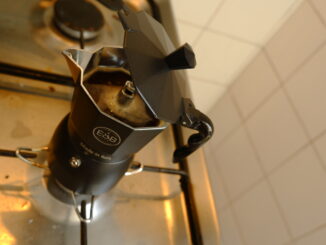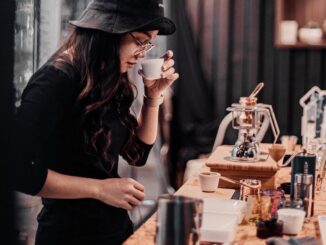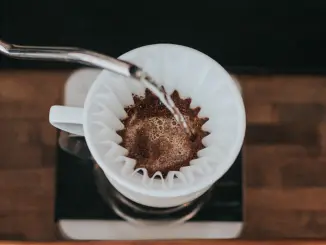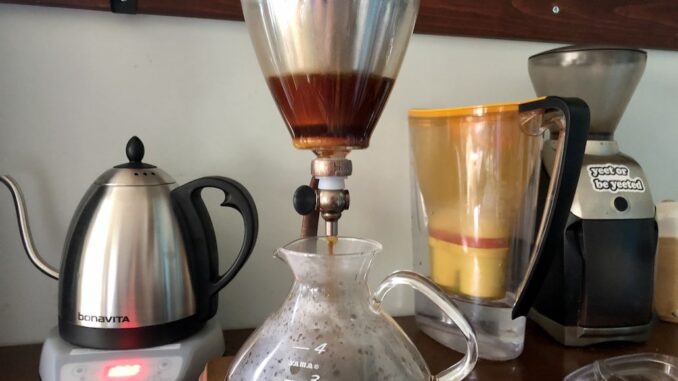
The Yama Silverton is a lesser-known coffee brewer with versatile capabilities.
BY KATRINA YENTCH
BARISTA MAGAZINE ONLINE
Photos by Katrina Yentch
The team at Yama in Taiwan is well-known for their high-quality borosilicate glassware. Many café hoppers in Asia may also be familiar with Yama’s cold-drip towers and siphons, iconic and aesthetic masterpieces showcasing chemistry-influenced coffee brewing. But have you heard of the Yama Silverton Brewer?
The Silverton has been around for several years now, and may be considered a bit of an underdog compared to the above-mentioned brewers. I have personally only seen it used once in a café setting, and even then it was not the standard brewer of choice for that business. However, its undoubtedly aesthetic appeal and similar chemistry-influenced design caught my eye, and I was curious to try a product that seemed to have more to it than being simply another pourover cone.
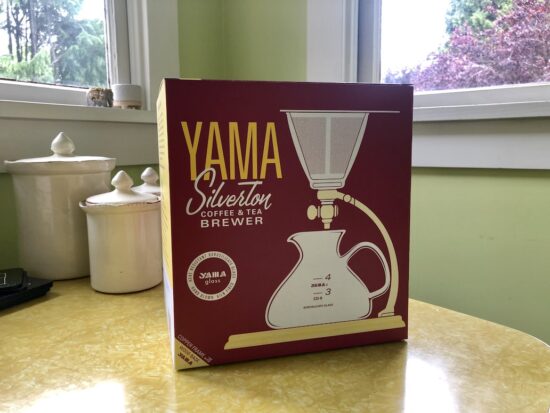
What is the Yama Silverton?
Yama’s Silverton Brewer is kind of a combination manual coffee device, with the capabilities of producing cold brew, pourovers, teas, and most differentiating, an immersion brew. The main pieces of the device are a wooden plaque base, with a brass handle connected to a glass pourover cone (it also comes in black with a silver handle), and most importantly, a valve with an open-close feature. This valve allows the cone to function as an immersion-style brewer or pourover. Other accompanying pieces are the metal filter, a small circular-shaped ceramic filter, and a carafe, whose opening is very narrowly shaped to specifically fit the Yama.
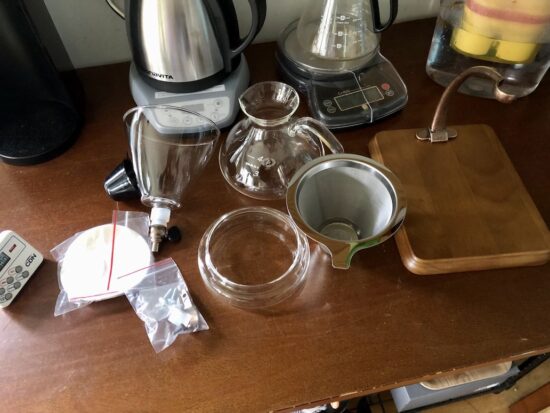
First Thoughts
My first impression of the Yama Silverton was that it was undoubtedly well-made. The borosilicate glass for both the carafe and the cone felt incredibly sturdy, as did the wooden base and the brass pieces. At $120 USD, I find it reasonably priced for the quality of the materials you’re receiving.
My second impression, however, was that it wasn’t the most intuitive device to put together. Unfortunately, I am one of those people who needs directions to assemble any kind of furniture, and the Yama Silverton didn’t come with any instructions for assembly or brewing with the device itself. Perhaps the latter is because it’s a combination brewer? Either way, I was a little lost at first before discovering that Espresso Parts had some PDFs on how to use the Yama Silverton on the product’s page.
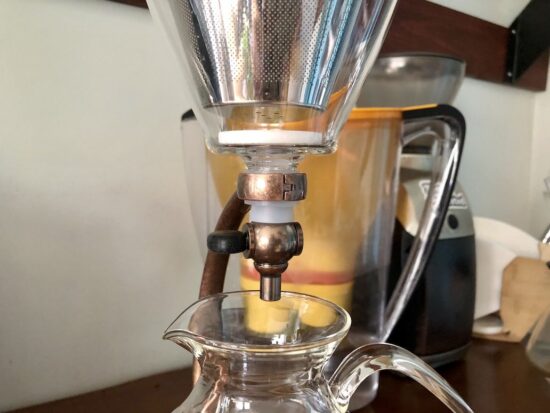
One final strange quirk I found with this brewer is that it doesn’t fit that many scales with the carafe on top. Therefore, you have to balance the whole brewer on top of a scale, which can be a little precarious depending on the model of scale you have.
Brewing with the Yama Silverton
In regards to brewing coffee with the Yama Silverton, I decided to give my first try with immersion-style brewing, seeing that it would be the most interesting since I brew this way the least.
After adding about 50 grams and 900 grams of water (a suggested 1:18 ratio), it had to sit and brew for about three minutes before dispensing. The brewing part itself was quite simple, and of course with much less error given the ease in immersion-style brewing. Once the time was up, all I did was open the valve and let the coffee dispense into the carafe.
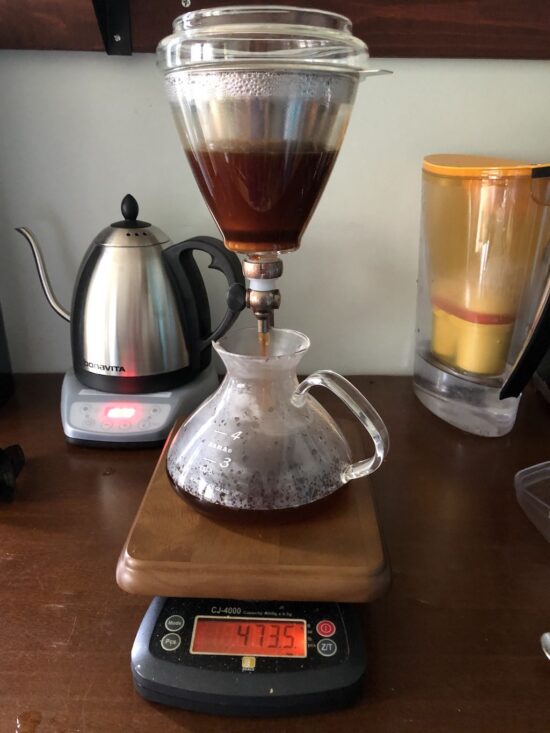
As far as the taste goes, it certainly felt heavier bodied, as most coffees with metal filters do. I think I would probably try a richer-tasting roast to accommodate this option next time, and avoid light-roast single-origin coffees unless it were pourover style.
Cleaning Will Take Time
While the Yama Silverton was incredibly simple to brew coffee with, the cleaning part is definitely not fun. Because of its narrow-shaped carafe, I found it hard to clean the device without putting it through a dishwasher, and the glass cone itself gets coffee grease stuck to it quite quickly. Because it’s screwed onto the handle, you have to unscrew it to remove it and clean it. For these reasons, the Silverton may actually work better in a café setting, in which you’re brewing multiple coffees at once and rinsing with hot water in between uses. Otherwise, that grease may stick overnight and become harder to clean, or you just have to remember to rinse the cone and metal filter with hot water as soon as you’re done brewing.
Four Methods—Which Would You Choose?
All in all, I think the Silverton would function best as a pourover method with a paper filter. However, I personally would use the Silverton as a tea brewer most often. This is because many teas can only steep for a limited amount of time, and the separation between the cone and the carafe makes it a very fuss-free experience to separate the leaves from the water. However, with a traditional teapot or infuser, you’re often forced to remove the leaves to avoid over-extraction, and find a place to store the wet leaves while you’re drinking your tea.
Perhaps I could be considered lazy for prioritizing cleanliness as a factor for which coffee (and tea) products I gravitate toward. However, since American coffee is quite often an on-the-go kind of situation, I like to think about how I can get the tastiest brew in the quickest amount of time!
All in all, I think manual-brewing nerds who decorate their shelves with coffee devices will fall in love with the Yama Silverton. It’s a versatile coffee brewer that’s well-made and offers a lot of eye candy for the home brewing station.


